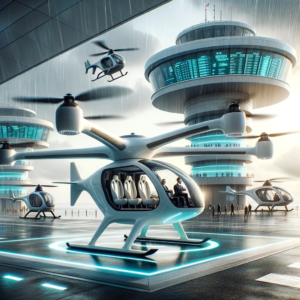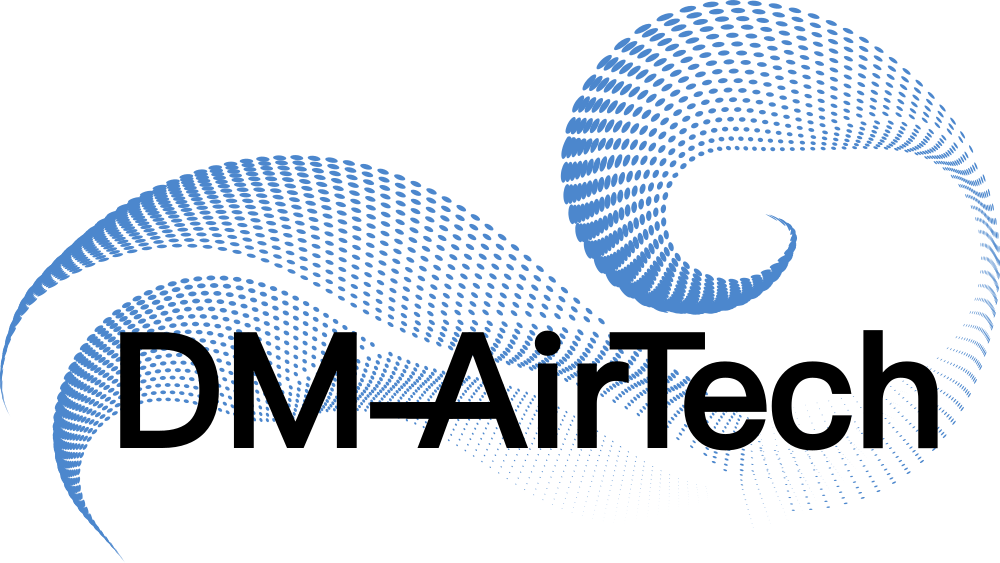The recent release of KPMG’s Air Taxi Readiness Index 2023 has been a topic of great interest, especially for those of us deeply involved in the aviation industry. This report provides a comprehensive evaluation that could very well serve as a roadmap for the future of vertical take-off and landing (VTOL) air mobility. Think of it as the aviation equivalent of a Michelin Guide for territories eager to step into the air taxi game.
The index is fascinating for a multitude of reasons. It delves into everything from infrastructure and regulations to public acceptance. Similarly, weather analytics have found their rightful place in this year’s Air Taxi Readiness Index.

Image created by Harsh Panwar using DALL-E’s advanced AI capabilities to illustrate the harmonious future of air taxis navigating through diverse weather conditions.
By observing our stakeholder’s activities and the closing path to commercialization of this industry, I see the importance of adding the weather layer to the determination of the readiness of cities and countries to welcome and profit by the flight of passenger drones. This will require examining seasonal variations and how single variables behaves e.g. wind speeds, turbulence, humidity, temperature and how frequently storms and icing conditions form . It’s like adding an extra layer of fidelity to an already intricate simulation, capturing the nuanced ways in which weather impacts future VTOL operations. By analysing these aspects, countries, municipalities as well as private stakeholders can strategize their decisions and make sure they are getting the return they expect out of their plans.
Now, why does this matter? For the same reason that you wouldn’t build a skyscraper without considering wind-induced vibrations or design a long-span bridge without accounting for aeroelastic divergence. Weather isn’t just a variable; it’s a decisive factor that can make or break the feasibility of air taxi services. Adverse weather conditions can disrupt services and pose significant safety risks. If a territory experiences frequent storms or high winds, the promise of air taxis becomes more of a pipe dream than an imminent reality.
Here’s where we at DM-AirTech come into play. Inspired by the wind turbines and salty air of Hamburg’s HafenCity, we developed VertiPlace and Corridor—solutions designed to embed weather data into air mobility decision-making. Our platforms contribute to the rich tapestry of analytics that make up the Air Taxi Readiness Index. They offer more than just numbers; they provide a holistic understanding of how weather patterns interact with the planned aerial corridors for VTOL operations.
As Dario Milani, our CEO at DM-AirTech, insightfully points out in the KPMG Air Taxi Readiness Index 2023 report,
‘Countries like Switzerland or Norway are more likely to face weather conditions that impact eVTOL services, compared to the likes of Germany, France, or Italy. However, at the urban-suburban level, specific eVTOL specs prove to be more serviceable in cities like Zurich than Hamburg or Munich. Hence the need for route-specific and hyper-local weather planning within prioritized countries.’
This isn’t merely an endorsement of our expertise; it underscores the importance of nuanced, localized weather planning in the broader context of air taxi readiness.
Another aspect that is overlooked by smallest start-ups or companies is how these aircrafts will behave in the complex environment. I am proud to say that this information is something that only DM-AirTech is currently able to provide at scale. We provide the capability to look in the urban environment where you intend to fly and capture with high fidelity the wind and turbulence behaviour in there. That’s what we do using Computational Fluid Dynamics (CFD). Whether you’re optimizing the aerodynamics of an aircraft or figuring out the best spots for wind turbines, CFD provides a level of granularity that turns guesswork into actionable insights.
As we look forward to the future of air mobility, I’m excited about the strides we’re making in understanding and leveraging weather conditions. This isn’t just about technological advancement; it’s about creating a well-oiled machine where not only tech and humans are in sync, but where we also account for natural forces like weather to ensure everything runs smoothly. A future where we don’t just build smart, green cities, but cities that are attuned to the rhythms of the natural world. And that, for me, is a future worth working towards.
Harsh Panwar, M.Sc, BTech
Technical Product Manager
DM-AirTech
